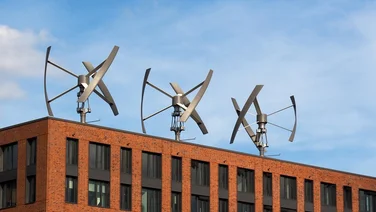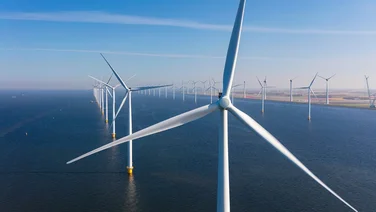- New wind turbine will have output capacity of 20 megawatts
- Based in Hainan province, it will have a swept area of 66,066 m2
- It will produce 80 million kWh of electricity a year

Chinese energy firm Mingyang Smart Energy has commissioned the world’s largest single-capacity offshore wind turbine, to be installed in Hainan province.
The MySE18.X-20MW wind turbine will upon completion have an output of up to 20 megawatts (MW) beating the previous Chinese record holder by 2 MW, set in 2023.
Lightweight and modular by design, it will be big enough to produce half the output of large wind farms, such as Norwegian Offshore Wind Wind Catching Systems, with its planned 40 MW output.
With a wind rotor diameter of 260-292 meters (853-958 feet), the turbine has a swept area of 66,966 m2 (720,816 square feet).
To put that into perspective, it is a little shy of the entire floor of the United States Capital Building, at 67,000 m2, or about the same area as 12 American Football fields.
The site of the new turbine will have average wind speeds of around 8.5 meters per second. This should enable the turbine to produce around 80 million kWh of electricity year-in-year-out. That’s enough power to keep the lights on for some 96,000 residents annually.

The new wind turbine in Hainan province will be the biggest in the worldAccording to Mingyang, the wind turbine is designed to comfortably weather level-17 typhoons with wind speeds in excess of 79.8 m/s (178.5 mph).
Wind turbines of this scale are indeed ambitious, but they also make sense long term. The wind is often more reliable offshore, meaning that wind turbines (whether large single units or large farms) can more predictably generate power throughout the year.
Installation offshore also prevents the loss of valuable land, and can make more economic sense as larger turbines like the MySE18.X-20MW are relatively easier to transport by ship than by vehicle on land.
Elevated installation costs aside at sea, given the more complicated engineering involved, and once installed, offshore wind turbines can generate more power (relatively speaking) than land-based ones. This, in theory, makes the increased cost of installation pay off faster.
The recent International Renewable Energy Agency report confirms this is already underway. According to the report, the global weighted average Levelized Cost of Energy (LCoE) of offshore wind dropped from about twice that of fossil fuels in 2010 to just 17% in 2022.
The report also notes that while offshore wind still has a higher LCoE than other renewables (like solar and hydro), it has the potential to make it viable for more investment globally. Projects like Wingyang’s gigantic turbine will only help elevate awareness of the technology’s potential.
Reports also suggest that Mingyang is already planning its next, even bigger turbine. The next one will be around 22 MW and will be installed sometime in 2025. If the dimensions scale from the MySE18.X-20MW, that would be a swept area in the order of 75,477 m2.







